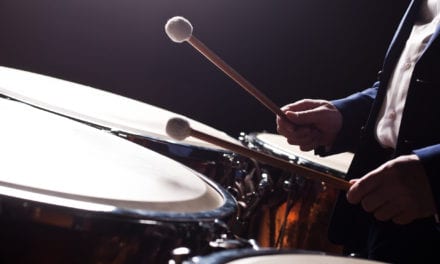It’s puzzling to me why we don’t address this reality with more frequency. We all invest boundless energy in the task of having clarinets playing in tune with clarinets, trumpets playing in tune with trumpets, saxophones playing in tune with saxophones and so on. But, when I ask principal players in bands I am working with if they have spent time outside of rehearsal matching pitches with first chair players in other sections of their band the response almost always is “no.”
Think of the benefits that would result from having the principal flute and clarinet spend a few minutes each week matching pitches and becoming aware of the tendencies of each other’s instruments. While at the same time the identical process is occurring between first chair trumpet and trombone, first chair alto saxophone and French horn and first chair euphonium and tuba. Of course the pairings are limitless but simply matching unisons and octaves with these basic instrument groupings will pay rich dividends.
Over time, the net result will be the creation of a series of “tuning anchor points” across the band that will serve to stabilize pitch and reinforce tuning accuracy from section to section.
There is a caveat. For maximum benefit this exercise requires a three-step process. First students should work to match pitches using a tuner to monitor their proficiency. “Guessing” they are in tune is valueless. This step is essential to learn what “in tune” sounds like.
But that step alone isn’t enough. Once students have been successful “tuning by sight” they must take the time to disengage themselves from the tuner and replicate the same degree of accuracy using their ears only.
Finally, when tuning at the beginning of full band rehearsal, have first chairs only initiate the process. When the principal player’s pitch accuracy settles in and is acceptable, engage the full ensemble.
Trust me! Basic ensemble intonation will improve dramatically.


